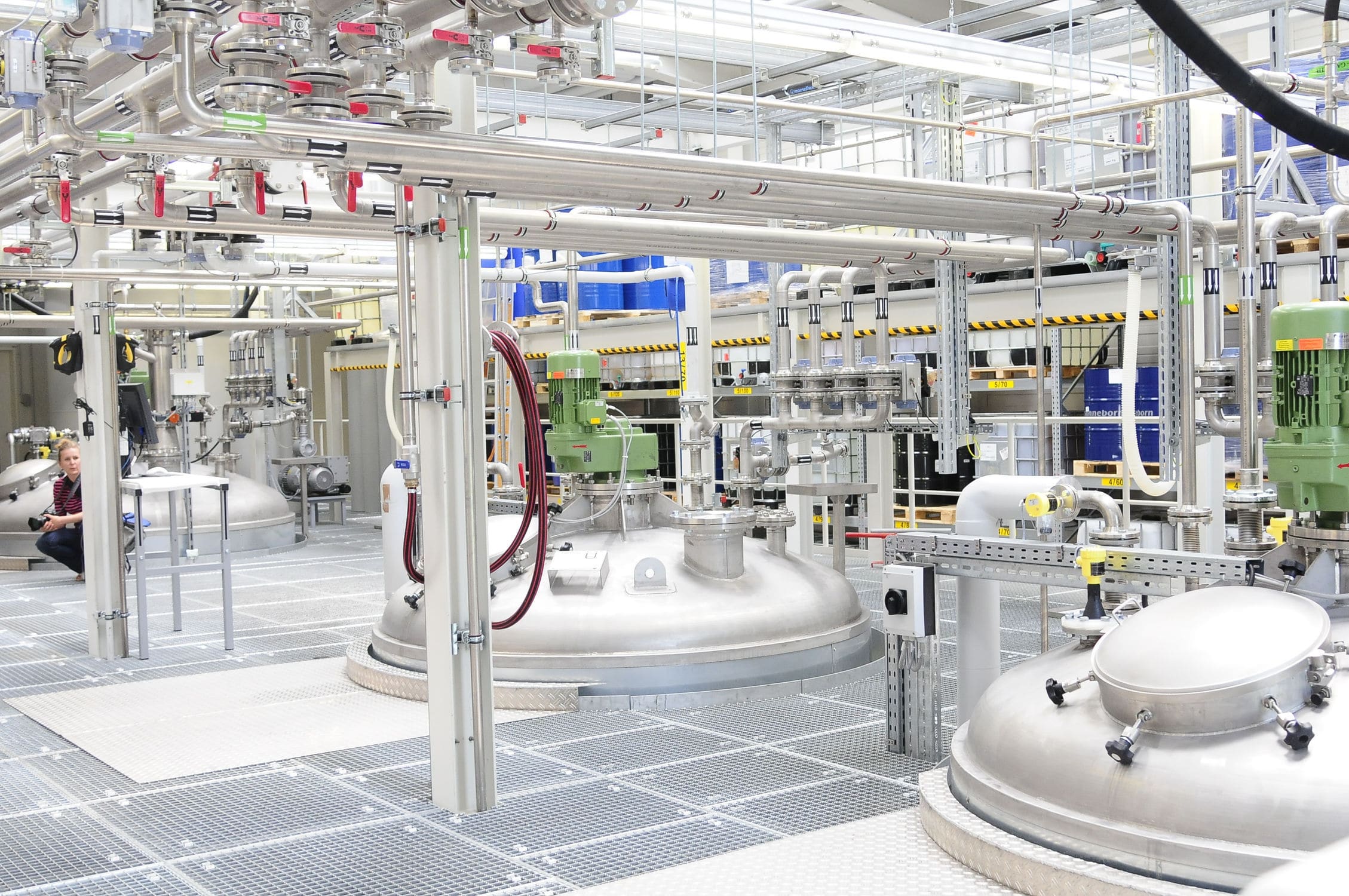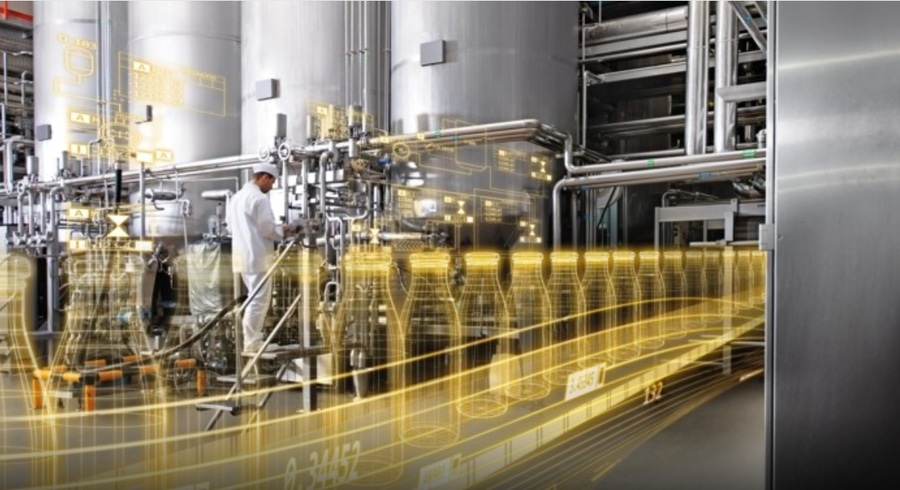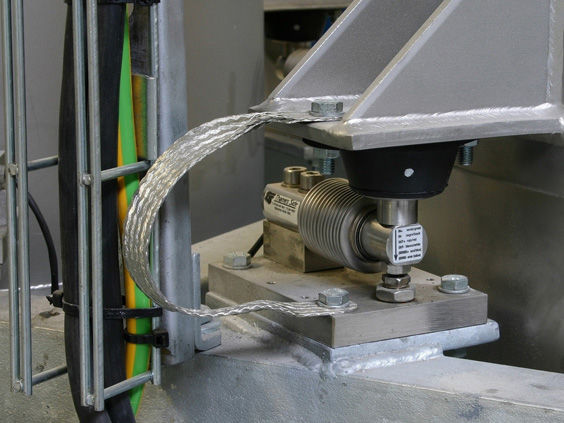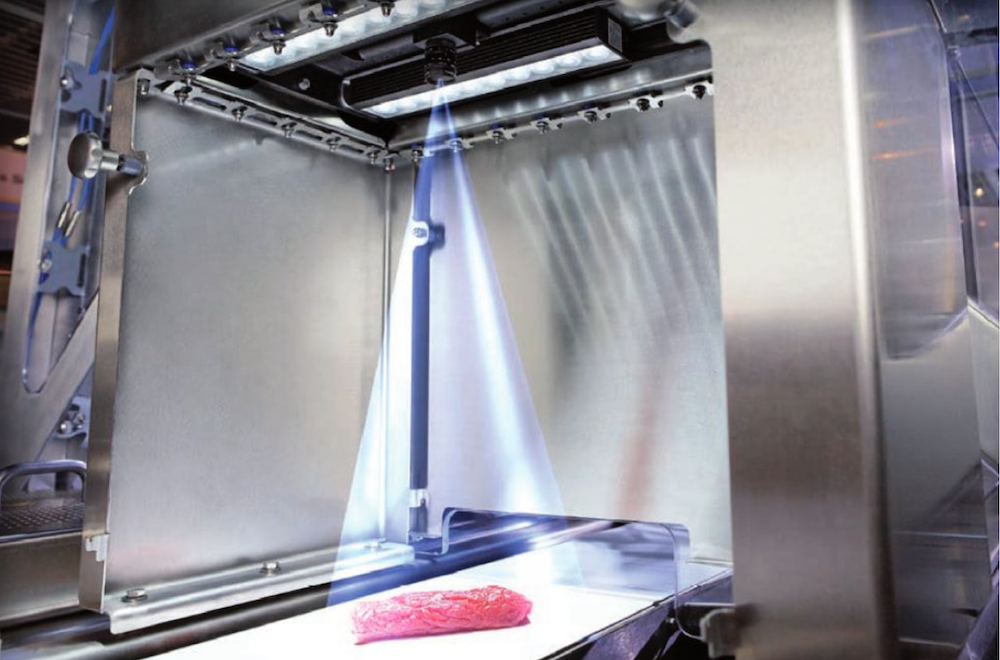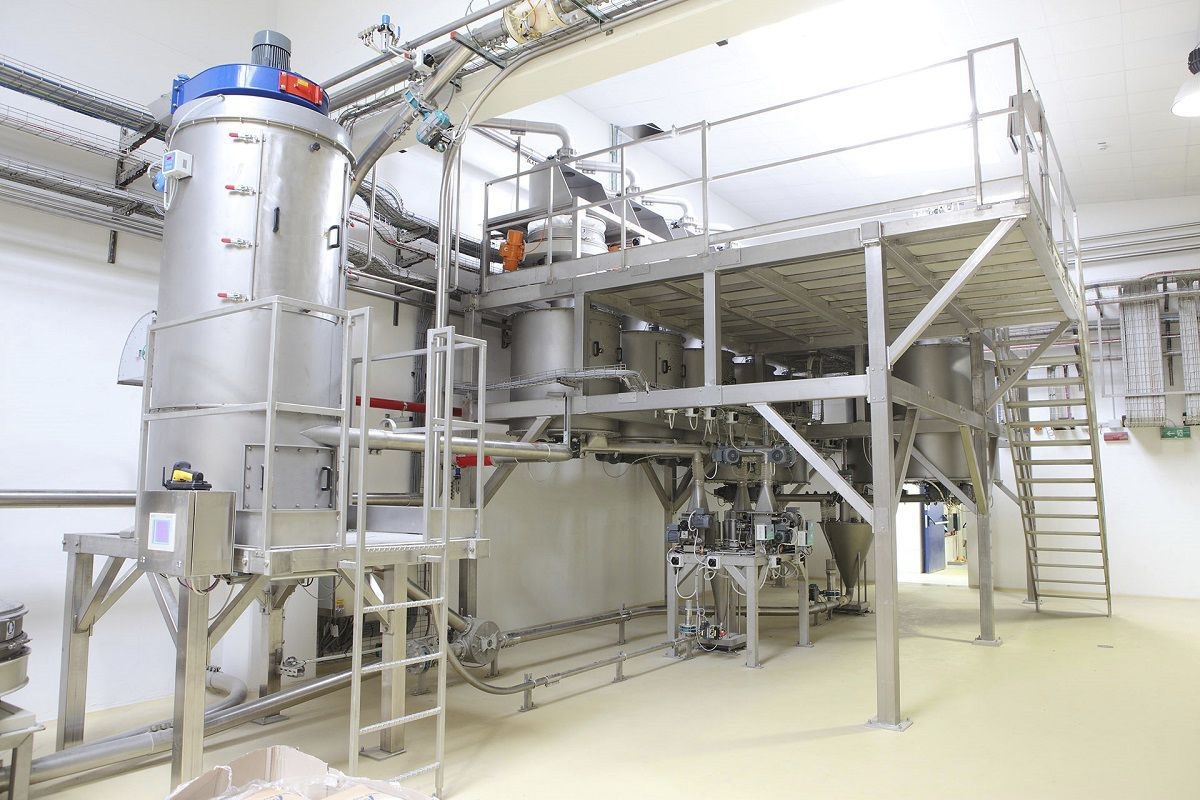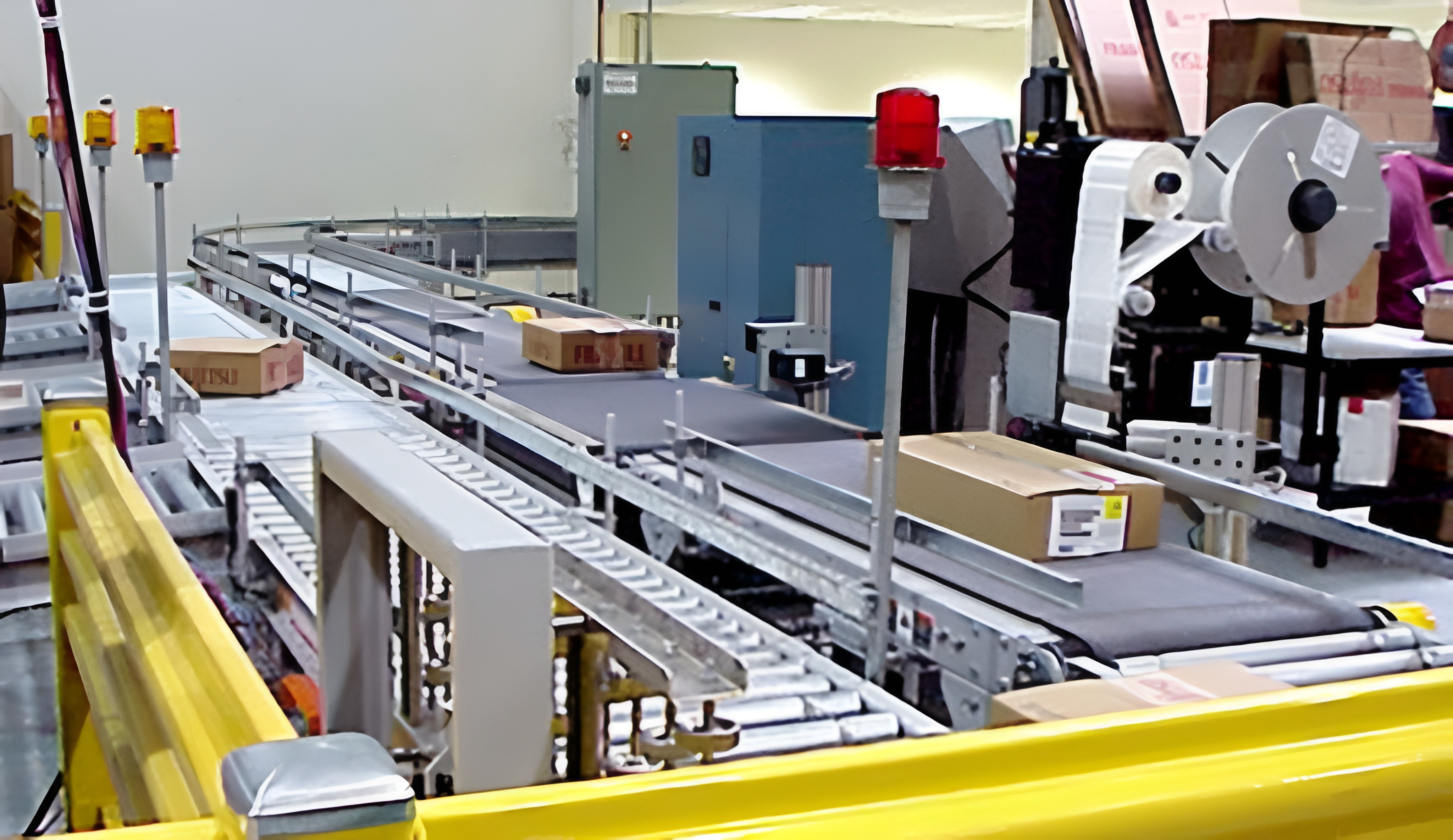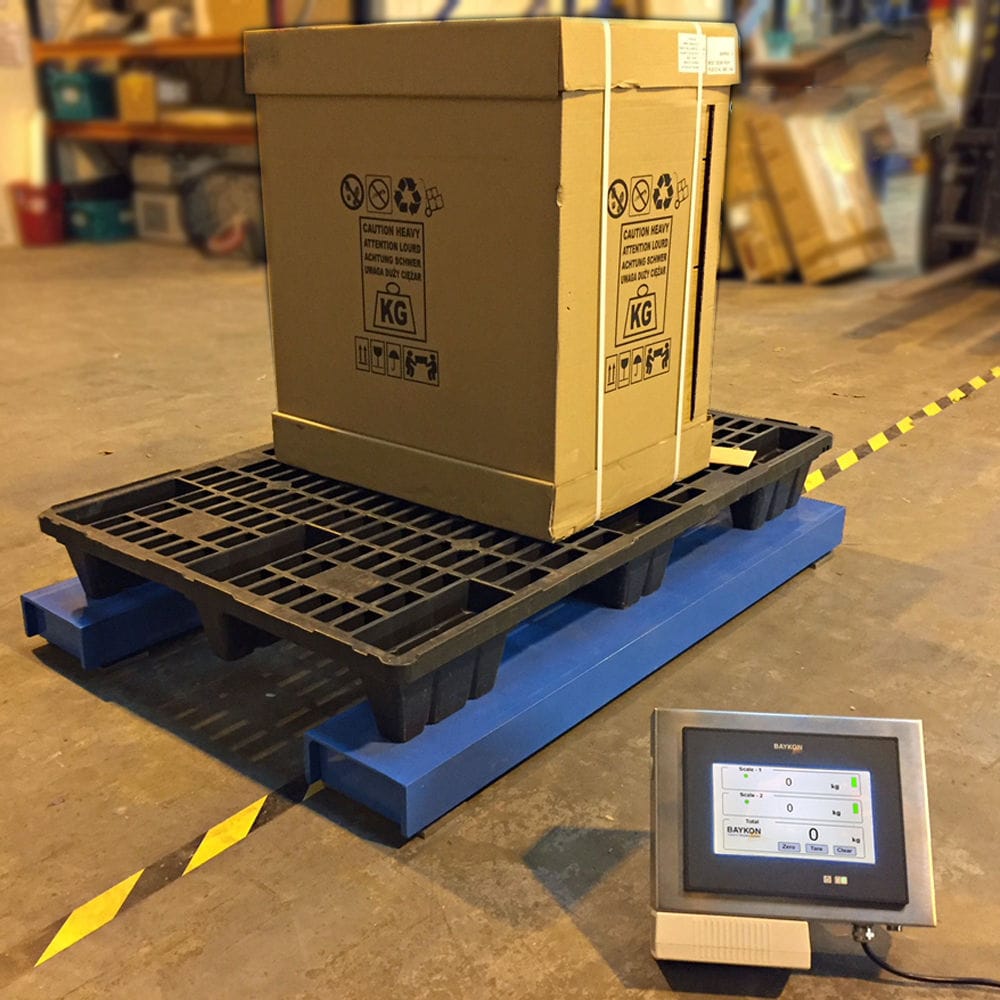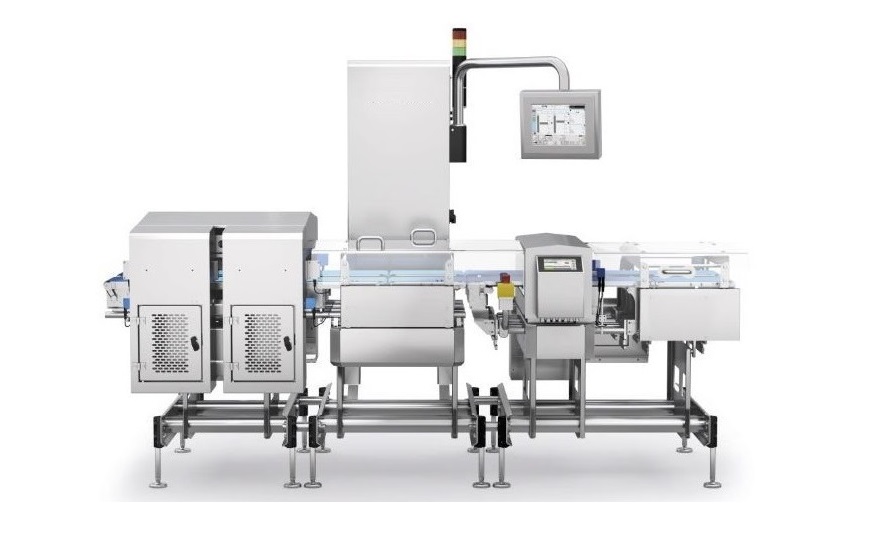

The automatic weighing machine is used to measure the weight of the material, return the weighing data to the background (CPU), and automatically reset to zero, preparing to continue weighing the next piece of material. It is composed of components such as programmable controllers, frequency converters, power switches, circuit breakers, contactors, and relays. The control system requires that the slitted materials be introduced into the weighing and sorting area by the conveyor belt. Once the proximity sensor detects the materials, it transmits the signal to the PLC, which then sends a trigger signal to the manipulator. The mechanical hand first moves vertically to pick up the material, then moves horizontally to the left to place the material on the electronic scale for weighing. At the same time, the electronic scale transmits the weight signal to the CPU. Then, the mechanical hand receives the trigger signal from the PLC, performs recognition and positioning, and moves vertically again to draw the weighed material from the electronic scale.
 020-34563445
020-34563445The weighing and Sorting machine is a production equipment mainly used to automatically weigh components and automatically grade them based on weight. After the electrode sheets are automatically weighed, the mechanical hand places them into five different storage boxes according to their weight categories. Materials whose weight exceeds the process control range (i.e., non-conforming products) will be separated and placed in NG boxes to prevent non-conforming products from flowing into the next process.
A perfect automatic grading control program is an effective means to improve the yield of material production. During the system design process, not only the structure of the automatic production line should be considered, but also the actual usage environment, control requirements and ease of operation of the system should be combined. The electrical control system of this system adopts OMRONCS1G series PLC to improve the reliability of the system and the accuracy of the positioning of the manipulator.
The touch screen is a human-machine dialogue operation interface, mainly responsible for setting process parameters, inputting various operation instructions, and switching between the main and auxiliary interfaces. The materials formed by punching on the conveyor belt, after surface dust removal, are conveyed to the working area by the conveyor belt to wait for weighing and sorting. A mechanical hand (system actuator) is an automated device that can imitate the movements of human hands and move workpieces or tools according to the set program trajectory and requirements instead of human hands. It can partially replace human manual labor. Industrial manipulators complete various expected tasks through programming. Generally, the actuating mechanisms mainly adopt linear cylinders, swing cylinders, pulse motors, servo motors, and DC servo manipulators. Manipulators are composed of four aspects: the perception part, the control part, the main machine part, and the actuating part. The pneumatic servo positioning system has replaced the servo motor or hydraulic servo system: the cylinder and swing motor complete the execution actions that were originally performed by the hydraulic cylinder or machinery. The main body part adopts standard profiles and is supplemented by a modular assembly form, enabling the pneumatic manipulator to be expanded into a series of standardized products.
It is used to weigh the material, return the weighing data to the background (CPU), and automatically reset to zero, preparing to continue weighing the next piece of material. It is composed of components such as programmable controllers, frequency converters, power switches, circuit breakers, contactors, and relays. The control system requires that the slitted materials be introduced into the weighing and sorting area by the conveyor belt. Once the proximity sensor detects the materials, it transmits the signal to the PLC, which then sends a trigger signal to the manipulator. The mechanical hand first moves vertically to pick up the material, then moves horizontally to the left to place the material on the Electronic scale for weighing. At the same time, the electronic scale transmits the weight signal to the CPU. Then, the mechanical hand receives the trigger signal from the PLC, performs recognition and positioning, and moves vertically again to draw the weighed material from the electronic scale. Then move horizontally to the left or right. According to the trigger signal, identify different horizontal limit switches to complete the placement of materials into the material box. Meanwhile, the CPU counts and tallies the quantity of qualified materials of different weight grades. When the quantity of materials in the material storage box reaches the detection range of the proximity switch, the proximity switch will send a signal to notify the system that the quantity of one or several levels of materials has reached the upper limit. The operator should promptly replace the material box. The production process requires that the control system not only be capable of automatically identifying and transmitting various input and output signals, but also have a complete warning function, and be able to precisely position the actuator to complete the corresponding actions.




